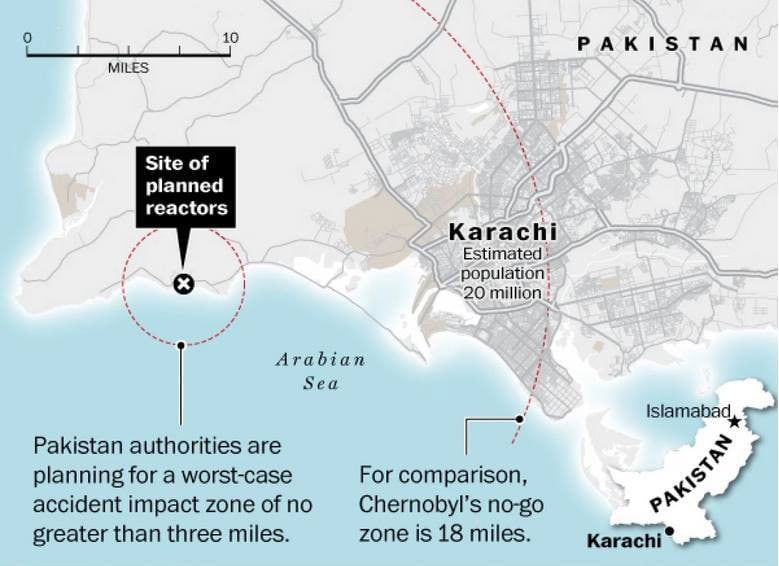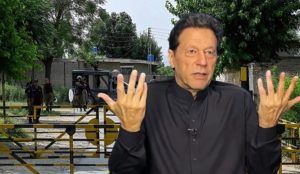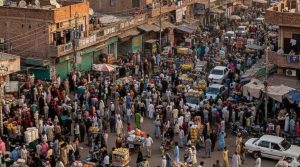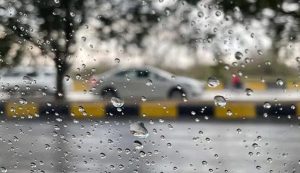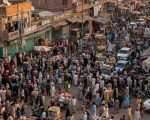KARACHI (Web Desk) – With China supplying two large nuclear reactors for energy-starved Pakistan, Karachi residents say a real nuclear nightmare is unfolding in the country’s largest and most volatile city, The Washington Post reported.
On the edge of Karachi, on an earthquake-prone seafront vulnerable to tsunamis, China is supplying two large nuclear reactors for the country.
The new plants, utilising a cutting-edge design not yet in use anywhere in the world, will each supply 1,100 megawatts to national energy grid. The reactors are being built next to a much smaller 1970s-era reactor located on a popular beach where fishermen still make wooden boats by hand.
But the new ACP-1000 reactors will also stand less than 20 miles from downtown Karachi, a dense and rapidly growing metropolis of about 20 million residents.
“You are talking about a city one-third the population of the United Kingdom,” said Abdul Sattar Pirzada, a Karachi lawyer who is seeking to get the project halted. “If there would be an accident, this would cripple Karachi, and if you cripple Karachi, you cripple Pakistan.”
In recommendations pertaining to nuclear plant construction in the United States, the U.S. Nuclear Regulatory Commission says a new reactor should be sited away from very densely populated areas, preferably with fewer than 500 people per square mile within a 20-mile radius. That zone around Karachi’s power plant holds about 6,450 people per square mile, Pervez Hoodbhoy, a Pakistani nuclear physicist, wrote in Newsweek Pakistan last year.
Some U.S. diplomatic officials have also expressed concern about the initiative, in particular about China’s role in providing nuclear technology to Pakistan.
Caught off-guard by the opposition, political leaders have rushed to defend one of Prime Minister Nawaz Sharif’s top priorities — addressing the energy shortfall that can plunge households nationwide into darkness for half the day.
Pakistan, one of the few developing countries still pursuing civilian nuclear energy options since the 2011 Fukushima disaster in Japan, has three operative nuclear power plants, including the Canadian-built reactor in Karachi, but has turned to China for help expanding its capacity.
Efforts are underway to double the size of the Chashma Nuclear Power Plant in northern Punjab province, as well as to build the new Karachi reactors.
“The risks are there. You cannot discount them, but you prepare for them,” said Khawaja Asif, Pakistan’s water, power and defense minister. “We are a nuclear power, so don’t underestimate us.”
China developed the ACP-1000 reactor, which cost about $5 billion each to build, after studying and refining the design of a reactor that France built in China in the 1980s. The China National Nuclear Corporation is now supplying the ACP-1000 reactor to Pakistan, despite an international ban on the transfer of nuclear technology to Pakistan because of the country’s refusal to sign the Nuclear Nonproliferation Treaty.
“We are going to be the guinea pigs,” said Arif Belgaumi, a Karachi architect who wants the international community to pay closer attention to the government’s plans.
China joined the Nuclear Suppliers Group — whose members agree not to transfer to treaty non-signers any technology that could be used to develop a nuclear weapon — in 2004. But it claims it had already promised to help Pakistan, allowing it to continue developing the reactors.
“China’s expanding civilian nuclear cooperation with Pakistan raises concerns and we urge China to be transparent regarding this cooperation,” the U.S. Embassy said in a statement Thursday.
Until now, Pakistani leaders have faced little public discontent over the country’s nuclear advances. But the country’s progressive movement is evolving, sparking novelconfrontations between activists and government over environmental and public safety issues. And the prospect of 20-story reactors rising next to a public beach used for swimming, camel rides and picnics is a vivid illustration of what’s at stake.
Though international monitors generally give Pakistan satisfactory reviews for safeguarding nuclear materials, industrial accidents causing hundreds of fatalities remain common here. There are concerns that Pakistani technicians won’t be able to operate or maintain the Chinese nuclear technology.
Karamat Ali, chairman of the Pakistan Institute of Labour Education and Research, noted that the world has already experienced three major nuclear accidents — at Three Mile Island in the United States in 1979 and at Chernobyl in the former Soviet Union in 1986, in addition to the Fukushima disaster in Japan in 2011.
“Those are three highly advanced countries,” Ali said. “This is Pakistan. We don’t live on technology and science. In fact we are quite allergic to that.”
Of particular concern is the threat of terrorism, especially considering Karachi’s long history of head-scratching security lapses.
“You couldn’t even dream of evacuating Karachi,” said Hoodbhoy, the physicist. “The minute an alarm was sounded, everything would be choked up. There would be murder and mayhem because people would be trying to flee. Others would be trying to take over their homes and cars.”
But Azfar Minhaj, general manager of Karachi’s reactor project, said Pakistan sought the ACP-1000 reactor because it makes a radiation leak far less likely. Each reactor will have a double containment structure capable of withstanding the impact of a commercial airliner, he said, adding that there is also an elaborate filtration system and that the reactor will be able to cool itself for 72 hours without power.
“If a new car comes with an airbag, would you start thinking, ‘This is a new feature, it’s never been tested in Pakistan, never built in Pakistan. Should we use it or not?’ ” Minhaj asked.
Because of the enhanced safety features, Minhaj said, authorities are planning for an impact zone no greater than three miles in the event of a worst-case accident. Most of the affected residents would be asked to shelter in place, not evacuate, he said. Hoodbhoy points out that even today, the no-go zones around the Chernobyl and Fukushima plants are 18 and 12 miles respectively.
Minhaj said concerns about the effect of a tsunami are also overblown because the new reactors are being built on a rock ledge about 39 feet above sea level. Pakistan’s meteorological office recently concluded that Karachi could face a tsunami of up to 23 feet in the event of a 9.0-magnitude earthquake in the region.
Mark Hibbs, a senior associate at the Carnegie Endowment for International Peace, said he suspects that the new Chinese design is indeed less prone to accidents. But he noted that most poorer countries have shied from developing a nuclear energy footprint since Fukushima.
“If there was a lesson we learned from the Fukushima accident, it’s that, if you are going to get into the nuclear business, and if you don’t have world-class technology, good logistics, enough personnel, a lot of money and experience managing crisis situations, then you are not going to be able to manage a severe accident,” Hibbs said.
Zia Mian, a Pakistani physicist at the Program of Science and Global Security at Princeton University who is also fighting the project, notes that the existing Canadian reactor was designed in the 1960s to generate just 100 megawatts of electricity. The new reactors will produce 22 times that amount and use a combined 40 to 60 tons of enriched-uranium fuel each, he said. And each year, one-third of that spent fuel will also be removed from the core and stored in large containment pools at the plant, Mian said.
“You put all of that together, and the hazards are unimaginably larger,” he said. After Sharif showed up in Karachi in December 2013 to break ground on the new reactors, Pirzada and other activists began organising against it on Facebook. Last summer, they filed a lawsuit against the Pakistan Atomic Energy Commission and the Pakistan Nuclear Regulatory Authority alleging that construction began without a proper environmental impact study.
In December, a court halted vertical construction — but allowed excavation work to continue — until a new environmental assessment is completed, about a month from now. If major construction is then allowed to resume, the reactors will have an expected life span of at least 60 years.
“Of course, we need electricity, but we don’t need electricity to commit suicide,” Ali said. Musadaq Malik, a Sharif adviser on energy issues, counters that a country that trusts its military to possess nuclear weapons can also trust its government to maintain a Chinese nuclear power plant.
“We may look irresponsible, but we are not that irresponsible,” Malik said. “We have engineers, we have scientists, we have our security apparatus. . . .Like other nations, we have done all of this before, reasonably well.”

